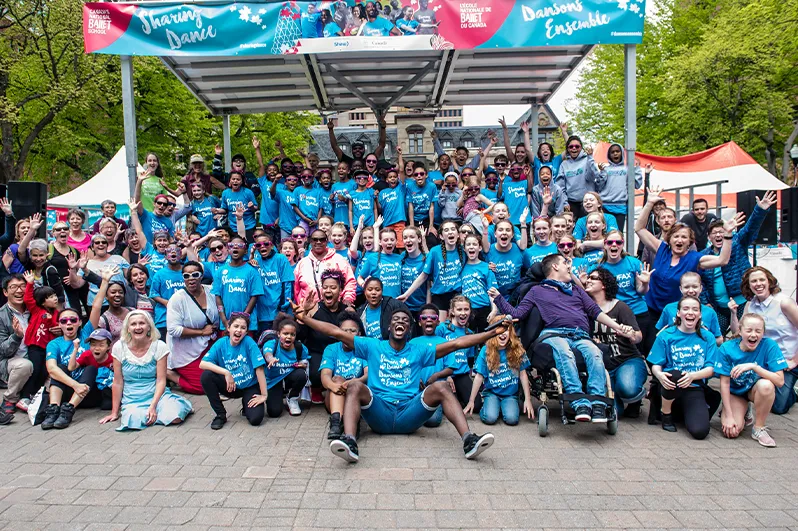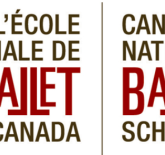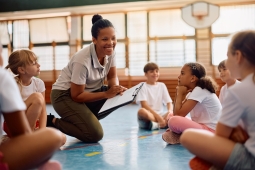Canada’s National Ballet School presents the 2020 NBS Sharing Dance Choreography

Previously published in Volume 85, Issue 4
Abstract
Embracing themes of community and collaboration, the latest NBS Sharing Dance Choreography continues its tradition of helping Canadians engage with meaningful themes through dance.
Canada's National Ballet School (NBS) knows that the artistry and physicality of dance helps kids develop skills and confidence, while fostering a love of movement, emotional intelligence and creativity. This transformative power of dance lies at the heart of NBS’ drive to create an annual piece of choreography—the NBS Sharing Dance Choreography—in collaboration with Canadian artists.
This year’s NBS Sharing Dance Choreography embraces themes of community, collaboration, partnership, and support. It is a meaningful opportunity for individuals to reflect on the role of those themes in their own lives.
Choreographed by Jera Wolfe—an award-winning choreographer and performer of Métis heritage and an Associate Artist with Red Sky Performance—the piece is now freely available for people to learn across Canada. NBS offers digital resources including step-by-step instructional videos, lesson plans, a seated adapted version of the choreography, and downloadable music to help even the newest dancers get involved.
The choreography is inspired by Wolfe’s Arise, a moving choreographic work created for 110 of NBS’ Professional Ballet/Academic Program students and performed at NBS’ Spring Showcase to sold-out audiences. Wolfe adapted the piece, retaining its original energy and vitality, into the NBS Sharing Dance Choreography.
Reflecting on the inspiration for Arise and the process of adapting it for communities across the country, Wolfe says, “there will always be challenges in life. I have realized that what defines me is not necessarily my failures or accomplishments, but how I rose to face them. We will all have great challenges to overcome in our own lives, everything from personal, political, to environmental. Only by collaborating, supporting and caring together will we be able to arise to face these challenges.”
“[The Sharing Dance Choreography] shares that same focus and energy. It’s almost like a breath from Arise,” says Wolfe.
Released during NBS’ 60th anniversary year, this year’s choreography is a poignant representation of those relationships that sparked the growth of NBS Sharing Dance Fest from local celebration to nation-wide movement. Made up of a series of Sharing Dance Day events—hosted in schools, communities and as grassroots gatherings—NBS Sharing Dance Fest celebrates the power of dance, while also providing an opportunity for all who learn the choreography to perform it together wherever they are.
Today, the annual NBS Sharing Dance Fest engages tens of thousands of Canadians. From classrooms and extra-curricular programs to community centers and retirement facilities, people of all ages and abilities learn and perform original choreography that celebrates movement, music, and themes that resonate throughout the country.
Ten years ago, NBS artistic staff members could not have anticipated the initiative’s nation-wide expansion when it began as a flash-mob in honour of Canada’s National Ballet School’s 50th anniversary. Since then, collaborative partnerships with communities of teachers, dancers, researchers, programmers and many others have been the key to the initiative’s momentum and growth.

“It is amazing to feel the momentum of these programs and to experience their impact across the country,” says Ashleigh Powell, Head of Community Dance at Canada's National Ballet School. “We are grateful to the many teachers, volunteers and committed community actors who have been a part of this growing movement. The power and relevance of dance is demonstrated so clearly by the dedicated people who bring our programs to life every day.”
Learn more about this unique choreography AND register to access the choreography resources at no cost.








